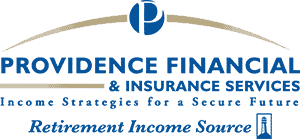November often acts as a transition into many things: the holiday season, end of the year preparations, and winter’s arrival. This November signaled another transition for employees with a 401(k) plan: the transition from ignorance to knowledge.
According to a recent AARP survey, 70% of people aren’t aware that they currently pay fees for their 401(k) plan. This month will change that: for the first time, investors will be able to see the amount they paid in fees for the previous quarter.
Prior to the new Department of Labor regulations requiring employers to provide fee information, the only deductions most employees saw were attributed to market losses. Starting this November, 401(k) account statements will contain a much different landscape. Unfortunately, as people transition from ignorance to knowledge, it can take even more time before that knowledge turns to understanding and comprehension. It might help to review the most common questions surrounding this fee disclosure and what changes this month will bring for you.
Why the change?
Many people will say that ignorance is bliss, that knowing what they pay won’t make it any less expensive, so why tell them? Especially considering the financial stress that most people are dealing with right now. Well, one of the main answers to that is accountability on the part of the company. Most of the companies who are charged with the task of choosing the 401(k) plan provider are ignorant as well, and often times don’t take the care to ensure they are choosing the best option.
The bottom line is this: most of the fees associated with these plans are paid by the employees, not the company. Picture yourself on a shopping spree with someone else’s checkbook in hand. If you know that it’s not your money and no one will ever see how much you spent, you wouldn’t take a whole lot of time shopping around for the best deals. This is essentially the situation that employers have found themselves in, and the fee disclosure forces those companies to be more accountable in terms of the decisions they make and the costs associated.
What are the fees for?
The perks of a 401(k) come with a cost that most people never thought to factor in, until now. That cost is created from a combination of sources associated with the handling of the accounts themselves such as the processing and holding of the plans at each layer of distribution such as administration, investment management, and so on. Those costs vary based on the individual’s investments and the plan providers.
What to do about it?
This question goes back to the “knowing what you pay won’t make it any less expensive” argument. Many financial experts think that the required disclosures could very well make the fees less expensive. It’s predicted that many high level executives, who often have the largest investments (and, in turn, some of the largest fees) won’t take their costs quietly. They expect the sticker shock of the costs to cause quite a bit of push back from the investors against their company and the provider of the plan.
It’s important that investors take advantage of their access to this information and do their research. There are a variety of resources online that offer free comparisons between the fees of different providers. Employees can also compare their fees with their coworkers and make sure they let their employers know that they are unhappy.
Overall, the implications of the disclosure requirements are expected to make to an impact. Many financial experts expect to see some backlash from investors and even believe the fees will cause many people to withdraw from their 401(k) programs altogether and pursue other investment options. There is no question that the November statements will give investors something to talk about, and that conversation is sure to give employers something to think about.

